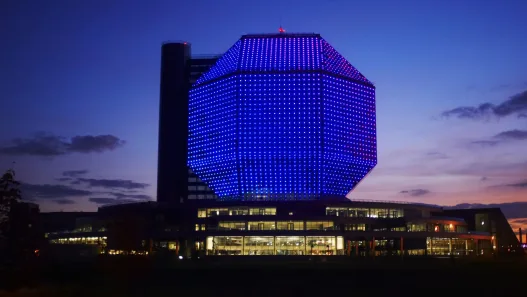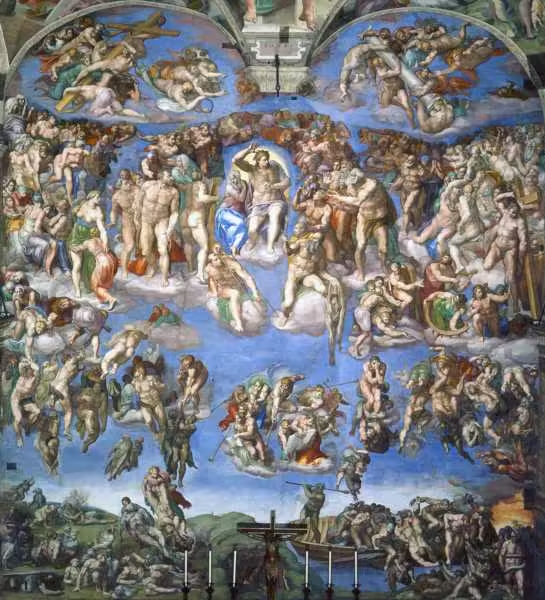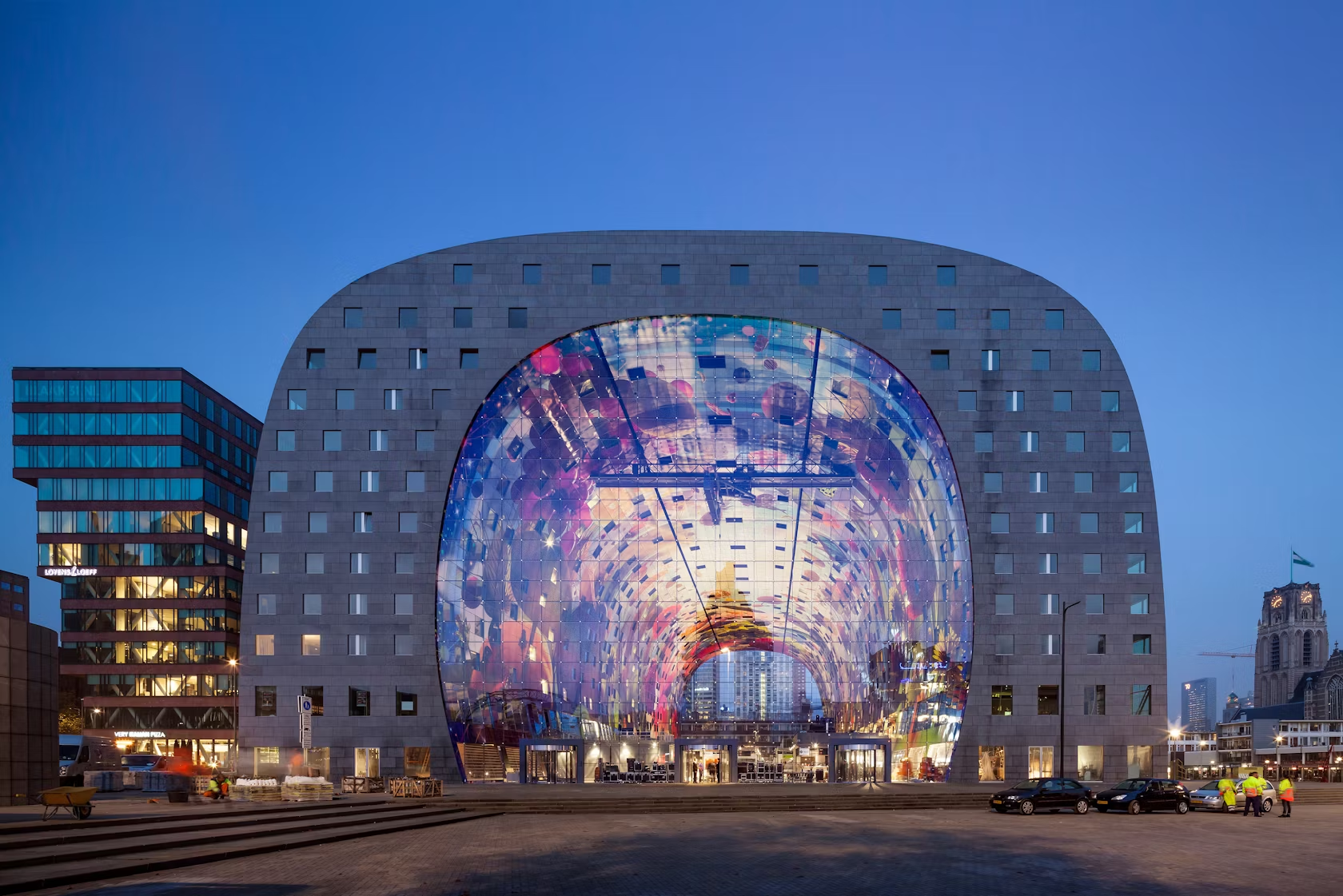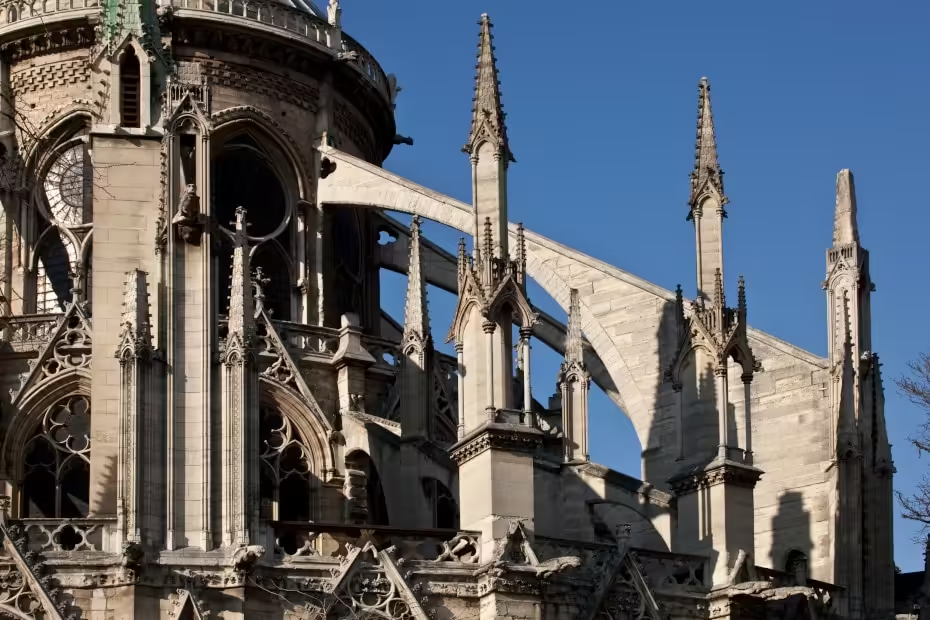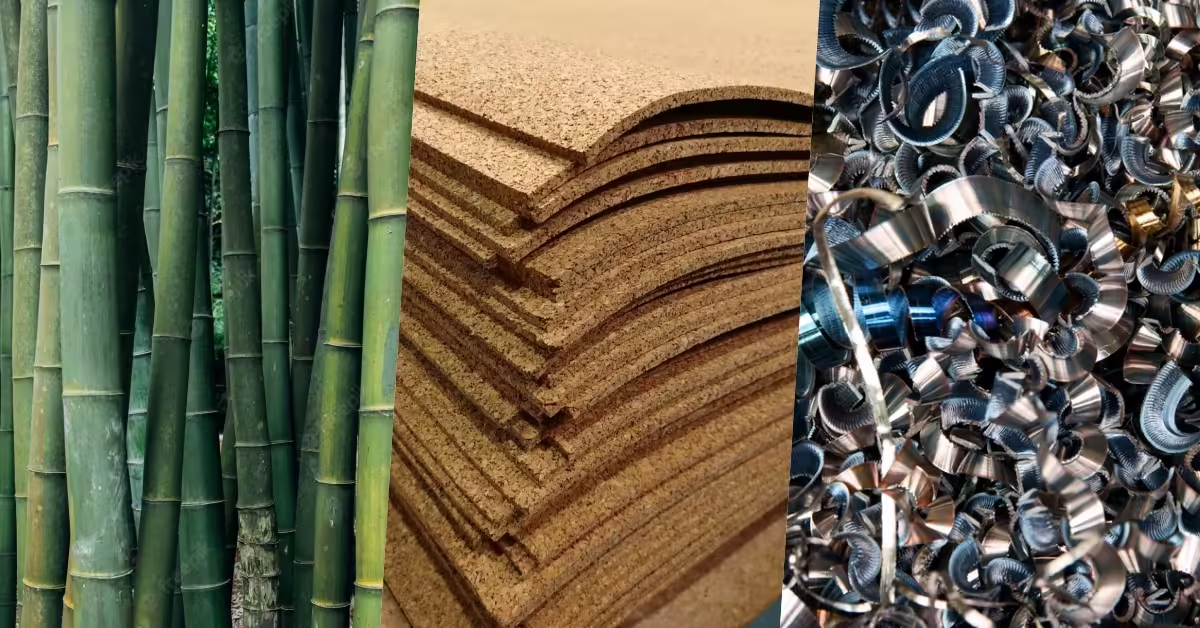Renaissance frescoes represent the pinnacle of artistic achievement during a transformative period in European history. This vibrant art form encompasses not only the aesthetic values of the period, but also its cultural, social and religious dynamics. Painted directly on wet plaster, frescoes have the unique ability to combine the visual with the architectural, creating immersive experiences that invite viewers to step into the narratives they depict. This research will provide an overview of the historical context in which frescoes were born, their distinctive characteristics, the important artists who shaped this art form, the importance of plaster in the technique, and what you can expect.

Historical Context
The Renaissance marked a revival of classical learning and wisdom, significantly influencing art, literature and philosophy over a period spanning from the 14th to the 17th centuries. This movement, which first emerged in Italy, sought to break free from the constraints of the medieval period and embrace humanism – the idea that human experience and reason could shape understanding of the world. In this context, frescoes developed as a means to beautify churches, palaces and public buildings, reflecting both religious themes and a growing interest in mythology and the human condition.
Frescoes were often commissioned by wealthy patrons, including the Church and wealthy families who wished to display their power and cultural sophistication. The large scale of these works not only decorated spaces, but also conveyed moral and philosophical messages that reinforced the ideals of the Renaissance. Frescoes have therefore become a central feature of public and private life, bridging the gap between art and society.
Main Characteristics of Frescoes
Frescoes are distinguished by their unique technique, which involves the application of water-based pigments on freshly laid wet plaster. As the plaster dries, the colors become an integral part of the wall, creating a durable and vibrant work of art. This method requires skill and speed, as artists must work quickly to apply their designs before the plaster hardens. The result is a luminous quality that enriches the colors and gives the frescoes a depth that is difficult to achieve with other painting methods.
Apart from their technical qualities, frescoes often contain elaborate compositions full of narrative detail. Artists used techniques such as chiaroscuro, the use of light and shadow to create a sense of three-dimensionality and realism. The themes depicted in Renaissance frescoes range from biblical stories to scenes of everyday life and often contain allegorical meanings. Since many viewers were illiterate and relied on these images for religious and cultural education, the ability to tell stories visually was crucial.
Important Artists and Their Works
In the history of Renaissance frescoes, several artists stand out, each contributing their own unique style and vision. One of the most famous is Michelangelo, whose work in the Sistine Chapel remains iconic. His magnificent ceiling frescoes depicting scenes from Genesis showcase not only his mastery of human anatomy, but also his ability to convey profound narrative depth. Another important figure is Raphael, whose frescoes in the Stanza della Segnatura in the Vatican beautifully blend classical philosophy and Christian thought, showing the harmony between the two fields.
Other important artists include Giotto, known for his emotionally resonant and groundbreaking works that laid the groundwork for future fresco techniques, and Fra Angelico, whose divine and spiritual compositions evoked a deep sense of spirituality. Each of these artists pushed the boundaries of fresco painting by exploring new themes, techniques and emotional depths.
The Importance of Plaster in Fresco Technique
The role of plaster in fresco technique cannot be overstated. The choice of material and the method of application significantly affect the final result. There are two basic types of plaster used in frescoes: *buon fresco* and *fresco secco*. *Buon fresco* allows pigments to be applied to wet plaster and as it dries, the colors adhere to the wall. This method creates a lasting vibrancy and durability, allowing the artwork to stand the test of time.
In contrast, *fresco secco* involves painting on dry plaster, which can cause flaking or fading over time. While *fresco secco* allows for greater detail and precision, it lacks the luminosity of *buon fresco*. Understanding the properties of plaster, along with careful preparation and application techniques, is essential for artists aiming to create lasting works of art.
Blog Structure Overview
This blog will guide readers through a comprehensive examination of Renaissance frescoes, revealing their historical significance, key characteristics and the master artists who brought them to life. Each chapter will build on the previous one and offer insights into the complex relationship between art and the cultural milieu of the Renaissance. By the end, readers will better understand this extraordinary art form, grasping not only its beauty but also its profound impact on history and society. Join us on a journey through the vibrant world of Renaissance frescoes, where art and history intertwine in stunning visual narratives.
Types of Plaster Used in Frescoes
In the world of art and architecture, frescoes stand out as a timeless technique for painting walls. This method, which involves applying pigment on freshly laid plaster, relies heavily on the type of plaster used. The choice of plaster affects not only the durability of the artwork but also its aesthetic qualities. Exploring various types of plaster reveals the complex relationship between material and artistic expression, connecting the past to the present.
Lime Plaster
Lime plaster is one of the oldest materials used in frescoes and dates back to ancient civilizations. Composed mainly of calcium carbonate, lime plaster is mixed with water and aggregates to form a workable paste. One of its key properties is its ability to breathe, allowing moisture to escape, helping to prevent damage over time. This is especially vital in humid environments where the trapping of moisture can lead to deterioration.
Artists have favored lime plaster for its compatibility with natural pigments. When applied over wet plaster, these pigments chemically bond as the lime hardens, resulting in vibrant colors that can last for centuries. Iconic examples of lime plaster frescoes can be seen in the works of Renaissance masters such as Michelangelo and Raphael, whose stunning ceilings and walls showcase the durability and beauty of this material.
Gypsum Plaster
Gypsum plaster, often called plaster of Paris, is another popular choice for frescoes, especially in areas where lime is less accessible. Made from gypsum rock, it is known for its fast setting time and smooth surface. Artists appreciate gypsum plaster for its fine texture, which allows for detailed work and subtle shading.
While gypsum plaster is perfect for interior applications due to its fire-resistant properties, it has some limitations when used in frescoes. Unlike lime plaster, gypsum does not have the same breathability, which can lead to problems in humid conditions. However, it is widely used in decorative arts such as ornamental molds and castings where precise details are required.
Sand and Aggregate Blends
In some fresco applications, a combination of sand and aggregates is used to create a textured surface. Such plasters often contain a variety of materials such as crushed stone or gravel, which adds strength and stability. The rough texture can provide a unique aesthetic, allowing a creative interplay between light and shadow on the surface.
These blends are particularly effective in outdoor frescoes, where the added durability helps to withstand the elements. Artists can manipulate the texture to achieve different effects and increase the visual interest of their work. Historical examples abound in ancient Roman frescoes, where artists skillfully used these mixtures to create dynamic, textured compositions.
Modern and Traditional Plaster
The debate between modern and traditional plastering techniques reflects wider changes in art and architecture. Traditional plasters such as lime and plaster have been used for centuries and are rooted in time-tested methods. They offer a sense of authenticity and a connection to historical practices.
In contrast, modern plasters often contain synthetic materials and additives that can enhance performance, such as faster drying times and improved adhesion. These contemporary options give artists greater flexibility and speed, but they can lack the character and warmth of traditional materials. Many artists today strive to find a balance, blending modern techniques with traditional aesthetics to create innovative frescoes that honor the past while embracing the future.
Regional Variations in Plaster Composition
The composition of the plaster can vary considerably according to regional materials and cultural practices. In Italy, for example, the use of lime plaster is common, reflecting the abundance of limestone in the region. Meanwhile, in colder climates, artists may turn to gypsum plaster for its insulating properties.
In addition, local traditions influence the choice of aggregates and pigments. In some cultures, natural clays or earth pigments are added to enhance color and texture, creating unique regional styles. These variations not only contribute to the visual diversity of frescoes around the world, but also tell stories about the materials and techniques available to artists in different contexts.
As a result, the types of plaster used in frescoes play a crucial role in the creation and longevity of these magnificent works of art. From the ancient techniques of lime plaster to the modern innovations of synthetic materials, each type offers different properties that influence artistic expression. By understanding these materials and their application, we gain a deeper insight into the rich history of fresco painting and its enduring legacy in the world of art and architecture.
Plaster Application Process
The process of applying plaster is a vital aspect of construction and renovation that enhances both the aesthetic and functional qualities of walls and ceilings. Plaster not only provides a smooth, attractive surface, but also acts as a protective barrier against moisture and corrosion. Understanding the intricacies of this process can ensure that the end result is both beautiful and durable, making it a topic worth investigating.
Preparing the Wall Surface
Before any plaster is applied, the wall surface must be meticulously prepared. This step is very important because it affects how well the plaster will adhere and perform over time. The surface must be clean and free of dust, grease and loose debris. This usually involves washing the wall or using a vacuum to remove particles that may interfere with adhesion.
In some cases, especially with new drywall, it is important to ensure that all joints or seams are properly taped and smoothed. On old surfaces, peeling paint or wallpaper should be removed to create a solid base. If the wall is particularly porous or rough, a primer can be applied to improve adhesion and create a smooth surface. This preparatory phase not only sets the stage for a successful plaster application, but also helps prevent future complications such as cracking or flaking.
Layering Techniques
Once the wall is prepared, layering techniques come into play. Plastering is usually done in stages, with each layer serving a specific purpose. The first layer, often called a scratch coat, is applied to create a rough surface on which subsequent layers can adhere. This layer is typically thicker and is spread evenly using a trowel. It is important to allow this layer to partially dry before moving on to the next layer.
The second coat, known as the brown coat, is applied to build thickness and provide a smoother surface. This coat should be feathered to blend seamlessly into the surrounding areas. Finally, the final layer, the finish coat, is applied to achieve the desired texture and appearance. This layer can be polished or textured, depending on the design needs. Each layer allows for creativity and customization, making plastering not just a construction job, but an art form.
Timing and Drying Considerations
Timing plays a critical role in the plaster application process. Each layer of plaster requires sufficient drying time before the next is applied. This is very important because applying a new layer too early can trap moisture and lead to problems such as mold or improper curing. In general, drying time can vary depending on environmental conditions such as temperature and humidity.
In colder or more humid environments, each coat may take longer to dry completely. A good rule of thumb is to wait at least one hour before applying the next coat, but this may be longer depending on the specific conditions. Homeowners and builders should monitor the surface for signs of dryness, such as a change in color or texture. Understanding these timing nuances can significantly affect the quality and longevity of the plastered surface.
Required Tools and Materials
The tools and materials used in the plaster application process are crucial for achieving a quality finish. Among the basic materials is the plaster itself, which can be found in various formulations depending on the desired finish and durability. Common types of plaster include gypsum, lime and cement-based mixtures.
In terms of tools, the trowel is the most important tool for spreading and smoothing the plaster. The hawk, a flat board used to hold the plaster, is also essential for easy application. Other tools may include mixing buckets, a sponge for finishing touches and protective equipment such as gloves and masks to ensure safety during the process. Having the right tools not only makes the job easier, but also contributes to a more professional-looking result.
Implementation Challenges
While plastering can produce stunning results, it is not without its challenges. One of the most significant obstacles is achieving a perfectly smooth surface, which requires skill and practice. Beginners may struggle to apply even pressure or spread the plaster consistently, which can lead to visible imperfections.
Another challenge is dealing with drying inconsistencies. Factors such as room temperature, humidity and airflow can affect how quickly the plaster dries, sometimes leading to unexpected delays. Also, if the plaster is applied too thickly, it can crack as it dries, requiring repairs that can be time-consuming and costly.
Despite these challenges, careful preparation, patience and practice can lead to successful plastering projects. The rewards of a beautifully finished wall or ceiling are well worth the effort, transforming spaces in fascinating ways that highlight the art and craft of plaster application.
The Role of Plaster in Color and Durability
Plaster is often an unsung hero in the world of architecture and art, playing a crucial role in both the aesthetic and structural aspects of buildings. This versatile material has been used for centuries, serving as a canvas for color and a protective layer against the elements. Understanding how plaster affects color vibrancy, durability and longevity can provide valuable insights into its importance in architectural design and conservation.
Impact on Color Vibrancy
When it comes to color vibrancy, plaster acts as an essential medium that interacts with pigments to produce stunning visuals. The choice of plaster type, texture and application technique can significantly affect how colors are perceived. For example, a smooth plaster surface can enhance the brightness of bright hues, reflecting light in a way that makes colors pop. Conversely, a rougher texture can absorb light, muting colors and giving them a more subdued appearance.
In addition, the specific materials used in plaster can also contribute to the richness of color. Lime-based plasters, known for their breathability and flexibility, often produce more vibrant and long-lasting colors when combined with natural pigments. This is because they allow chemical reactions that can enhance and stabilize colors, creating a more dynamic visual effect. Historical examples, such as the stunning frescoes of the Renaissance, show how artists used plaster not just as a substrate but as an integral part of their color palette.
Effects of Environmental Factors
Environmental factors significantly affect plaster and the colors applied to it. Exposure to sunlight can cause pigments to fade over time, especially if they are not properly protected. Ultraviolet (UV) rays can break down chemical bonds in paints, leading to loss of vibrancy. In addition, humidity and temperature fluctuations can cause plaster to crack or deteriorate, further affecting the appearance of painted surfaces.
In coastal areas, for example, salt from ocean spray can seep into the plaster and cause efflorescence – a white, powdery substance that can disrupt the color integrity of the surface. Similarly, in areas of high humidity, mold can thrive, staining the plaster and obscuring the underlying colors. Therefore, understanding the local climate and applying appropriate protective measures, such as choosing sealants or durable pigments, are crucial to preserve the vitality of plastered surfaces.
Longevity of Frescoes
The longevity of frescoes, paintings on freshly applied plaster, is directly related to the quality of the plaster and the techniques used. Frescoes are unique because the pigments are absorbed into the wet plaster, creating a bond that makes them less susceptible to fading compared to other painting methods. However, various factors can still affect their durability.
A key element in the longevity of frescoes is the choice of lime plaster, which allows the colors to cure and harden over time, increasing their durability. Historic frescoes such as those in the Sistine Chapel have endured for centuries thanks to careful selection of materials and techniques. But even these masterpieces have faced challenges such as pollution, humidity and temperature changes, necessitating restoration work to ensure their survival for future generations.
Restoration Techniques Involving Plaster
The restoration of plaster and frescoes is a delicate and skilled endeavor that requires a deep understanding of both art and materials. Techniques often involve cleaning surfaces to remove dirt and contaminants that have accumulated over time. This is done with great care, as abrasive methods can damage the underlying plaster or paint.
In cases where the plaster has deteriorated, conservators may use a process called inpainting, where new plaster is applied to fill in missing areas or repair cracks. The colors are then matched as closely as possible to the original, ensuring a seamless blend. Furthermore, modern advances in technology allow for more precise analysis of pigments and plaster compositions, enabling restorers to make more authentic repairs.
The use of non-invasive imaging techniques such as infrared reflectography has revolutionized the restoration process, allowing conservators to see beneath surface layers and better understand the original work. These techniques help to preserve the historical integrity of the artwork and ensure that it remains vibrant and durable for years to come.
Color Fading Case Studies
Several case studies illustrating the difficulties of color fading in plasterwork provide insight into the importance of material choice and environmental considerations. Take for example the famous murals in the Villa of the Mysteries in Pompeii. Despite being buried under volcanic ash for centuries, the colors have retained their remarkable vibrancy due to the high-quality lime plaster used and the stable burial conditions.
In contrast, the murals in the Church of San Francesco in Arezzo have suffered significant discoloration. This deterioration can be attributed to poor environmental conditions, such as exposure to moisture and pollutants, which exacerbated the effects of time on plaster and pigments. Restoration efforts have focused on identifying original materials and using modern techniques to reduce further fading, illustrating the ongoing battle between conservation and environmental degradation.
These examples highlight the importance of understanding the interplay between plaster, color and environmental factors in both historic and contemporary contexts. By learning from past successes and failures, architects, artists and conservators can better meet the challenges of color vibrancy and durability in plaster applications.
Symbolism and Aesthetic Considerations
Architecture is not just about creating functional spaces; it is also a profound expression of culture, emotion and thought. Symbolism and aesthetic considerations play a crucial role in how buildings are perceived and experienced. These elements help to convey deeper meanings and create atmospheres that resonate with individuals on various levels. In this research, we will examine visual texture and depth, symbolic meanings in plaster applications, the relationship between plaster and light, its influence on artistic styles and the interaction between architecture and frescoes.
Visual Texture and Depth
Visual texture refers to the perceived surface quality of a material that can evoke emotions and associations in observers. In architecture, visual texture adds dimension to surfaces, making them more interesting and inviting. This can be achieved through various techniques such as layering materials, using different surfaces and playing with light and shadow.
For example, a brick wall can appear rough and rustic, evoking a sense of history and permanence, while a smooth concrete surface can evoke modernity and minimalism. Architects skillfully manipulate these textures to enhance the viewer’s emotional response. In a public space, a textured facade can create a sense of warmth and welcome, encouraging social interaction.
In practice, consider the design of a community center where the architect uses a variety of textures to convey a narrative of inclusivity and creativity. The interplay of rough stone and smooth glass can symbolize the merging of tradition and innovation and invite visitors to reflect on the journey of their community.
Symbolic Meanings in Plaster Application
Plaster has been a fundamental material in architecture for centuries, valued not only for its practicality but also for its rich symbolic meanings. Historically, plaster has been used to create intricate designs and decorations, often reflecting a society’s cultural and spiritual beliefs.
In many cultures, the application of plaster is associated with protection and sacredness. In religious architecture, for example, stucco often serves to cover and protect sacred spaces, symbolizing the transition from the mundane to the divine. Elaborate plasterwork can enhance the spiritual experience of a space by conveying narratives from mythology or religious stories.
In contemporary architecture, plaster continues to have a symbolic significance. Its smooth surfaces can represent purity and simplicity, while textured applications can evoke a sense of authenticity and connection to nature. An artistically crafted plaster wall in a home can symbolize the personality of its owner, express creativity and individuality.
The Relationship between Plaster and Light
The interaction between plaster and light is a fascinating aspect of architectural design. Light can dramatically change the way plaster surfaces are perceived, enhancing textures and colors in ways that change throughout the day. This dynamic relationship can create an ever-evolving atmosphere in a space.
For example, a soft, diffused light can emphasize the subtle textures of a plaster wall, adding warmth and inviting comfort. Conversely, harsh direct light can cast strong shadows, emphasizing the depth of intricate plasterwork and creating a more dramatic effect. This interaction allows architects to design spaces that change with the light, transforming mood and experience throughout the day.
In practical applications, consider how a gallery can use plaster walls to display artworks. The choice of plaster finish and the placement of windows can enhance the visual impact of the art and create a harmonious balance between the pieces on display and their surroundings.
Impact on Artistic Styles
Plaster has historically influenced various artistic styles, shaping the way artists and architects approach their work. From the ornate ceilings of Baroque churches to the minimalist lines of modernist buildings, plaster has been a medium through which creativity flows.
During the Baroque period, plaster was often used to create elaborate moldings and sculptures that adorn ceilings and walls, reflecting the grandeur and drama of the time. Intricate details invited admiration and reverence, drawing the eye upward and enhancing the spiritual experience of the space.
In contrast, the modernist movement embraced simplicity and clarity, with plaster surfaces often left smooth and unadorned. This shift represented a break with tradition, emphasizing functionality and the beauty of the materials themselves. Today, contemporary architects continue to explore new plaster techniques and applications, combining traditional craftsmanship with modern aesthetics.
Interaction between Architecture and Frescoes
The relationship between architecture and frescoes is a fascinating dialog that enriches both fields. Painted directly on plaster, frescoes blend art with architecture, transforming walls into storytelling canvases. The practice has deep historical roots, especially in religious and civic buildings, where they serve to convey important narratives and ideals.
In ancient Rome, frescoes adorned the walls of houses and public spaces, depicting scenes from mythology or everyday life. This not only added beauty, but also communicated the values and aspirations of society. The architectural structure provided a framework for these narratives, creating immersive environments that captivated audiences.
In modern times, the integration of frescoes into architectural design remains a powerful means of expression. Contemporary artists and architects collaborate to create murals that reflect cultural identities and social issues, allowing spaces to tell new stories that resonate with today’s audiences. A community center can feature a fresco celebrating local history and foster a sense of pride and connection among visitors.
Ultimately, the exploration of symbolism and aesthetic considerations in architecture reveals a rich tapestry of meanings and experiences. Through the careful use of visual textures, stucco, light, artistic styles and frescoes, architects can create spaces that not only serve practical purposes, but also stimulate the human spirit, encourage reflection, connection and inspiration.
Contemporary Perspectives on Stucco in Frescoes
An art form that dates back to ancient civilizations, fresco painting remains a vibrant and important aspect of contemporary art and architecture. At its core, fresco involves the application of water-based pigments onto freshly laid plaster, creating a bond that allows the colors to become a permanent part of the wall surface. In today’s world, plaster in frescoes is not just a traditional medium; it embodies innovative restoration practices, evolving materials, educational methodologies and a dynamic interaction with other art forms. This research highlights how plaster continues to shape the art of fresco and its future trajectory.
Modern Restoration Practices
As time takes its toll on frescoes, modern restoration practices have become vital in preserving these historic masterpieces. Restoration specialists use a range of techniques to address damage caused by environmental factors, neglect or previous restoration work. One of the most important developments in this field is the use of non-invasive methods such as digital imaging and 3D scanning. These technologies allow restorers to assess the condition of a fresco without physically altering it.
Restorers also use modern plaster formulations that mimic the original materials used in frescoes. These formulations are designed to be compatible with historic plasters and ensure that the restoration blends seamlessly with the existing artwork. The restoration of Michelangelo’s Sistine Chapel ceiling is a prime example of this; by carefully matching the original pigments and plaster, experts were able to restore the vitality of the work while preserving its historical integrity.
Importantly, ethical considerations play an important role in modern restoration. Restorers strive to preserve the authenticity of the original work and often opt for minimal intervention. This approach emphasizes the importance of transparency in which restoration efforts are documented and made visible, allowing future generations to appreciate both the art and its journey through time.
Innovations in Plaster Materials
The evolution of plaster materials has opened new avenues for fresco artists. Contemporary innovations have led to the development of synthetic and hybrid plasters that offer greater durability and flexibility. These materials are generally lighter and more resistant to environmental stressors than traditional lime-based plasters.
An exciting innovation is the use of environmentally friendly materials that reduce the carbon footprint associated with plaster production. Artists now have access to plasters that contain recycled materials and increase sustainability in fresco art. For example, companies are experimenting with bio-based materials that not only provide structural integrity but also enhance the aesthetic qualities of the final work.
Moreover, new plaster formulations allow for more experimentation with texture and surface. Artists can now create surface effects ranging from smooth to highly textured and push the boundaries of traditional fresco techniques. This innovation enriches the fresco genre by promoting a dialogue between ancient practices and contemporary artistic expressions, while preserving its historical roots.
Educational Approaches to Fresco Techniques
The resurgence of interest in fresco painting has prompted educational institutions to develop comprehensive programs that teach traditional techniques alongside modern innovations. Workshops and courses now blend theory with hands-on practice, allowing students to engage deeply with the materials and methods of fresco painting.
In these educational environments, students learn about the historical context of frescoes, the chemistry of plaster and pigments, and the practical skills required for successful application. Instructors emphasize the importance of understanding the properties of plaster, as this knowledge is crucial to achieve the desired effects and ensure the longevity of the artwork.
Many programs also include fieldwork, where students can participate in restoration projects or collaborate with renowned artists. This experiential learning encourages a connection to the craft, enabling students to appreciate the challenges and rewards of working with plaster in frescoes. Their educational approach bridges tradition and modernity, cultivating a new generation of artists equipped to innovate in this timeless medium.
Comparative Analysis with Other Tools
Understanding plaster in the context of other artistic media reveals its unique properties and advantages. Unlike oil or acrylic paint, frescoes are inherently tied to architecture, transforming walls into canvases that interact with the space around them. The immediacy of fresco painting, where pigments must be applied before the plaster dries, creates a dynamic relationship between the artist and the work that requires both skill and spontaneity.
Moreover, frescoes are characterized by their durability. When applied correctly, they can stand the test of time, as seen in preserved works from the Renaissance and earlier. This longevity contrasts sharply with other mediums, such as watercolor, which can fade or deteriorate more quickly.
The tactile quality of plaster also distinguishes frescoes. The texture of plaster can enrich the visual experience by affecting the way light interacts with the surface. This offers a level of depth and richness that is often difficult to achieve with smooth materials. By studying these differences, artists can better appreciate the strengths of fresco painting and use the unique properties of plaster to create effective works of art.
Future Trends in Fresco Art
As the world advances, so does the art of fresco painting. Future trends are likely to encompass a fusion of technology and tradition, where digital tools help in the planning and execution of frescoes. Artists can increasingly use augmented reality to visualize how their work will interact with spaces before they start painting, allowing for greater precision and creativity.
Sustainability will also play an important role in the future of fresco art. As awareness of environmental issues grows, artists and restorers are likely to prioritize environmentally friendly materials and methods. This shift not only reflects an ethical commitment, but also offers new possibilities for innovation in this field.
Furthermore, the resurgence of public art initiatives could lead to a revival of frescoes in contemporary urban settings. Artists could be commissioned to create large-scale frescoes that reflect community narratives, cultural heritage and social issues. This trend could revitalize public spaces, making frescoes a vital part of the urban landscape and inviting wider community participation.
In conclusion, contemporary perspectives on plaster in frescoes emphasize a rich interplay of tradition, innovation and education. As artists, restorers and educators continue to explore this fascinating medium, plaster will undoubtedly remain a cornerstone of fresco art, bridging the past with a vibrant future.




